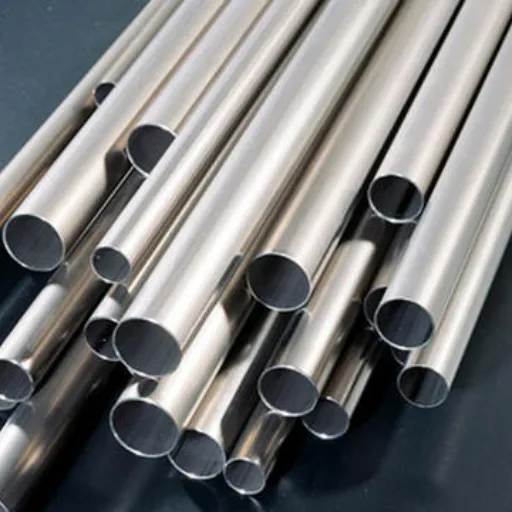Nickel alloy pipes and tubes are among the most important materials used in various high-performance applications due to their exceptional properties like strength, resistance to corrosion, and temperature endurance. These modern materials are widely used in different sectors, including aerospace, power generation, chemical processing, and marine engineering. In this article, we will focus on the properties that make seamless nickel alloy pipes and tubes a necessary choice in challenging settings. The audience will be provided with a thorough knowledge of the production processes, main advantages, and sector-specific uses that are encouraging their acceptance. So, if you are an engineer, purchasing expert, or a person working in the industry, this manual will give you useful information about the function of nickel alloy tubing in today’s engineering solutions.
Nickel Pipe and Its Applications: Through Introduction
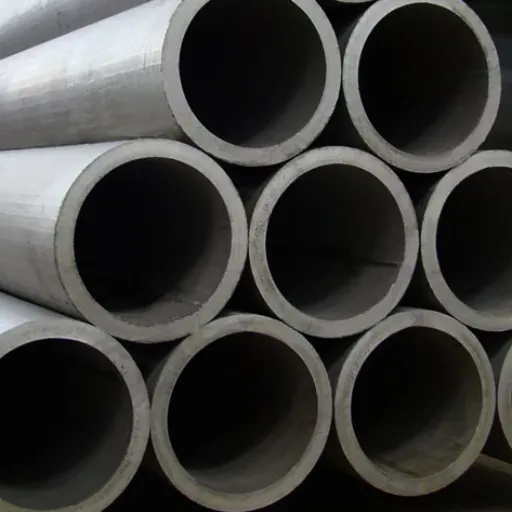
Nickel pipes are the crucial ones in the applications that need great resistance to corrosion, high temperature performance, and superb durability. The characteristics make the pipes very suitable for the chemical processing, oil and gas, aerospace, and power generation of the industries, where the materials are constantly exposed to very harsh operating conditions.
What is a Nickel Pipe?
Nickel pipes are metal pipes that mainly consist of nickel or nickel-based alloys, which possess excellent mechanical durability, resistance to oxidation, and corrosion at high temperatures. Nickel pipes find their place in the list of the most used types of pipes in the industries that deal with extreme conditions, such as oil and gas, chemical processing, petrochemical refining, and aerospace.
Nickel’s peculiar atomic arrangement allows it to be resistant to oxidation and the corrosive elements, especially when it comes to acids like hydrochloric acid and sulfuric acid. Thus, nickel pipes are often used where chemicals are very aggressive. Nickel 200, Nickel 201, Monel (nickel-copper alloys), and Hastelloy (nickel-molybdenum alloys) are among the most widely used alloys in nickel pipes. These alloys are designed to perfection targeting enhancement in properties like tensile strength, ductility, and resistance to pitting and SCC (stress corrosion cracking).
Seamless Nickel Alloy Tubing Overview
Seamless nickel alloy tubing is a vital element in the industries where superior performance under extreme conditions is needed. This high-quality tube is produced without any welded seams which makes it stronger, more uniform, and more resistant to the effects of stress and corrosion. The elimination of welds significantly reduces weak points, thus making seamless tubing especially suitable for the most demanding environments with high pressure and temperature, such as power generation, aerospace, and chemical processing.
📊 Market Growth Projection
In recent years, market analysis indicated that there would be a significant rise in the demand for seamless nickel alloy tubing globally owing to the progress in material science and industrial demand. As per a report published in 2023, the market is anticipated to grow at a compound annual growth rate (CAGR) of beyond 5% for the period of 2023 to 2030 and demand from emerging applications in hydrogen production, liquefied natural gas (LNG) facilities, and renewable energy systems is likely to contribute the most to the growth.
Nickel Pipe Benefits
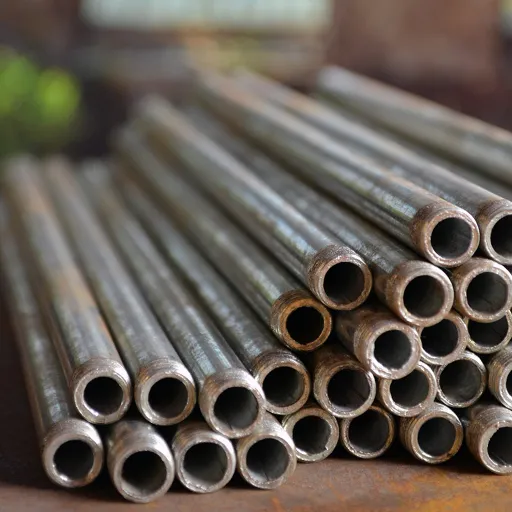
Nickel pipe is a tremendous, even fantastic material that gives a number of remarkable benefits such as, for example, the first-class corrosion resistance, coupled with absolutely high thermal and mechanical strength, besides its reliability even during the toughest conditions. Consequently, nickel pipe becomes the preferred material of choice for the chemical industry, power generation and even aerospace, where performance and reliability are vital.
💪 Nickel Tubing’s Superior Strength and Durability
The first-class and long-lasting quality of nickel tubing is what made it so popular across different industries to the point of being an indispensable material. Nickel tubing has a tensile strength of from 240 MPa to well over 750 MPa, depending on temperature, the alloy composition and treatment. It is incredibly tough and thus resilient in the most demanding situations. Its strong nature minimizes the cases of being deformed when subjected to high stress, which is very critical in the aerospace, automotive and nuclear industries where the reliability of the products is of utmost importance.
Moreover, nickel alloys like Monel, Hastelloy, and Inconel are very tough and so their fracture toughness is so high that they can be depended on even when subjected to the most extreme conditions, i.e., high pressure, high temperature, and corrosive atmosphere. For example, nickel-based alloys are able to retain their mechanical integrity when the temperature exceeds 2,000°F (1,093°C), which is a feature most important for turbine engines and heat exchangers. Besides, the resistance of nickel tubing to fatigue and creep is a strong pointer to its performance over time, even during the cases of application involving repeated thermal cycling and dynamic loads.
| Property | Specification |
|---|---|
| Tensile Strength | 240 MPa to 750+ MPa |
| Maximum Temperature | Exceeds 2,000°F (1,093°C) |
| Key Alloys | Monel, Hastelloy, Inconel |
🛡️ Corrosion Resistance in Extreme Conditions
Nickel tubing systems have the remarkable quality of being very resistant to corrosion in harsh conditions, and this is becoming more and more recognized. So very important that this one of the main contributors to nickel’s resistance is indeed the formation of a stable and adherent oxide layer on the surface that acts as a protective barrier against aggressive agents. For instance, Monel 400 and Inconel 625 alloys have been shown to be highly resistant to chloride-induced stress corrosion cracking, which is a common problem in different industries dealing with saltwater.
Studies done in the recent past have shown that Monel 400 alloy of about 63% nickel and 28-34% copper is a dream or miracle material for the marine environment as it displays excellent features such as resistance to pitting and crevice corrosion. Also, Alloy 625 fully provided the required d to withstand extended exposure to nitric acid, which is an extremely oxidizing acid, to still perform in terms of biomechanical property over wide temperature extremes.
Nickel Alloy Comparison with Other Materials
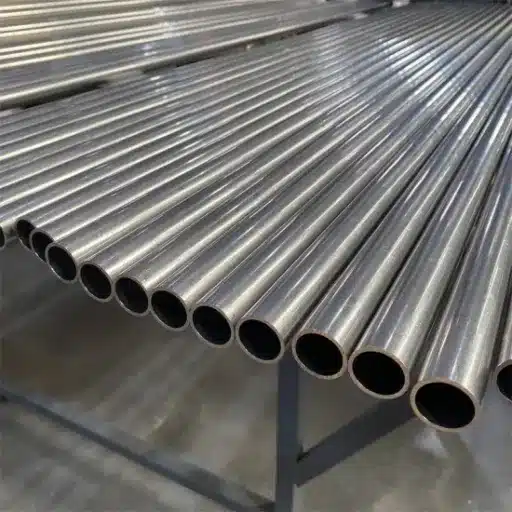
Nickel alloys are the most resistant materials against corrosion when I put them side by side with others, especially in extreme environments like sea water and chemical processing. The quality of keeping their mechanical strength under both extreme temperatures and continuous corrosion along with their pitting and crevice coffee resisting traits makes them even more trustworthy than the usual stainless steels or the lower graded ones for the harsh environments.
⚔️ Nickel vs. Stainless Steel: The Battle
Nickel alloys and stainless steels share a lot of similarities in industrial applications but are still suitable for different environments depending on the conditions of operation and the requirements. When you pit the two against each other, you need to think about corrosion resistance, mechanical strength, thermal performance, and cost-effectiveness as the main factors.
Nickel alloys have long been recognized for their remarkable ability to withstand corrosion, particularly in very unfriendly environments such as acids, alkalis, and chloride-rich solutions. Take, for example, the nickel-based alloys of Monel 400 and Hastelloy C-276; they are very good at handling environments where there are big changes in pH, high salt content, and exposure to oxidizing chemicals. Such qualities make nickel alloys very popular in the chemical processing, marine engineering, and aerospace industries as they are able to retain their strength and resist high temperature deformation even at 1200°F (650°C), a point at which most stainless steels give up in high temperature applications.
| Material | Max Temperature | Best Application |
|---|---|---|
| Nickel Alloys | Up to 1200°F (650°C) | Extreme environments, acids, high salt |
| Stainless Steel | Lower than nickel alloys | General purpose, moderate conditions |
💰 Cost Evaluation of Nickel Pipe Against Alternatives
When a cost analysis of nickel pipes is conducted the comparison is made against other materials such as stainless steel, copper-nickel, or carbon steel; the initial material cost should be integrated alongside the long-term operational costs. Nickel pipes are one of the most affordable choices in terms of prices among the other materials because nickel used as a base material is so expensive and it constitutes about 70% of the total manufacturing cost of the pipes. The range of pure nickel cost can be anywhere from $20,000 to $25,000 per ton as of 2023 which will be very unfavorable for products like nickel pipes due to market fluctuations.
In contrast, stainless steel is a more economical option by a good margin. Take, for example, 304-grade stainless steel which is the most used alloy and its price comes to approximately $2,000 to $3,000 per ton. This lower price range makes stainless steel the most favored material for projects that do not have the requirement of the extreme corrosion resistance that the nickel pipes can provide.
| Material Type | Cost Per Ton (2023) | Cost Factor |
|---|---|---|
| Pure Nickel | $20,000 – $25,000 | 70% of manufacturing cost |
| 304 Stainless Steel | $2,000 – $3,000 | Most economical option |
Maintenance Tips for Nickel Tubing
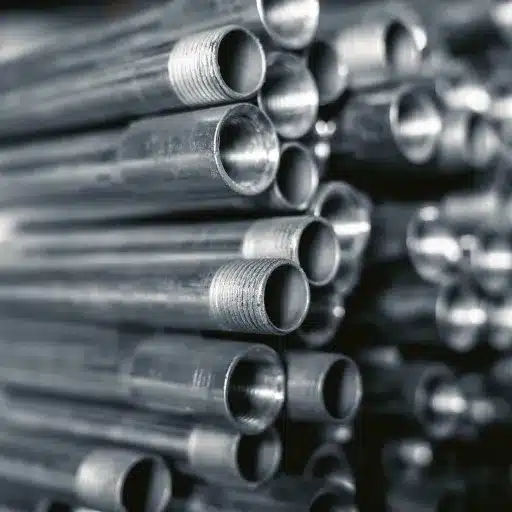
The first thing I do when it comes to the proper maintenance of nickel tubing is to carry out a thorough inspection for signs of wear, rust, or any sort of damage. Then, non-abrasive cleaning methods are used on the tubing to keep its surface intact, and I keep watch on the environment to cut down on the time it gets exposed to elements that cause rust.
🔍 Regular Inspection and Cleaning
In order to achieve the maximum efficiency of nickel tubing and also to lengthen the durability of the material, one cannot avoid cleaning and inspection as part of the main maintenance procedure. Regular inspections should be aimed at discovering the early signs of corrosion, pitting, or surface contamination that may need to be treated or the tubing replaced completely. If the two methods of visual inspections together with advanced non-destructive testing (NDT) are used, i.e., ultrasonic testing or eddy current testing, the industry studies say that these methods will not only detect subsurface flaws but will also give a clear picture of the structural soundness.
Cleaning of nickel tubing is a must-do procedure as it gets rid of the dirt, scale, or chemical oil from the surface that can in turn lead to decreased performance or even system failure. It is safer to use chemicals that are compatible with nickel alloys, for example, dilute nitric acid, Ash recommendations for cleaning agents. The concentration range of 5-20% is reported by the ASM Handbook to be a safe and effective concentration for an acid solution to stay within, and then thorough rinsing must be done to avoid the corrosion caused by residual acid.
📦 Best Practices for Storage and Handling
Controlled Storage Environment
The ideal place for the nickel tubing is one that is clean and dry and has the right temperature and humidity conditions. Studies point out that to have the lowest chance of getting the corrosion, the relative humidity must not be more than 50%. This is particularly true for coastal or industrial areas where there are high levels of atmospheric chloride. Moreover, areas with huge temperature changes that could cause condensation and thus lead to corrosion should be avoided.
Use of Protective Packaging
During the whole process of storage, the nickel tubing should be completely covered in protective wraps or sheathing. The most commonly used materials are polyethylene or shrink wrap to protect the surfaces against dust, moisture, and chemical contaminants. In case the tubing has to be temporarily exposed to open environments, rust inhibitors or desiccants can be used for added protection.
Proper Support and Positioning
The tubing is to be laid down horizontally on racks that have soft and non-abrasive supports so that no scratches, dents, or deformations will occur. In the case of coiled tubing, shelves or circular drum racks are the most suitable places for it. Do not go beyond the stacking height suggested by the manufacturer because too much weight may cause kinks or flattening.
Latest Innovations in Nickel Pipe Technology
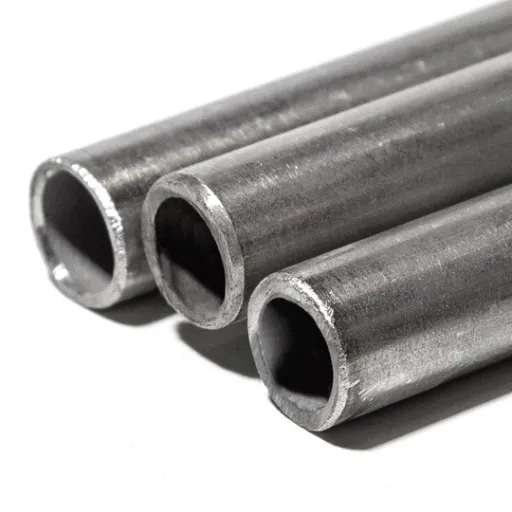
In my opinion, these innovations are mainly focused on the changes in the alloy composition, the different methods of production, and the surface treatments.
🏭 The Start of Pipeless Pipe Production
In the last few years, the production of seamless nickel pipes has overcome a very difficult challenge, through a combination of innovative techniques and modern technologies. These changes have not only made the manufacturing processes more efficient but also improved the quality of the end product. One example of a breakthrough is the adoption of the precision extrusion and pilgering processes, which guarantee uniform wall thicknesses and excellent surface finishes. All these procedures not only consume less raw material but also produce parts that are of higher dimensional accuracy, which is a critical requirement in the aerospace, power generation and chemical processing industries.
Furthermore, the application of the state-of-the-art automation and real-time monitoring systems in the production plants has changed the whole scenario of seamless pipe manufacturing. One of the major features of the automated system is that it keeps a close watch on the hot and cold working processes variable conditions like temperature, pressure, and deformation, which are ensuring product performance consistency and aiming at reducing production errors at the same time. According to a 2023 industry report, it has been revealed that through the introduction of the automated processes, the production efficiency has shot up by 25% while the defect rate has been brought down to 18% approximately.
📈 2023 Industry Report Results
🌊 The Emergence of New Uses in the Harshest Conditions
Nickel pipes are more and more indispensable in extreme conditions where other materials simply stop performing. The main reason for this is their amazing ability to resist corrosion, withstand different temperature ranges, and high mechanical strength. Thus the pipes are largely used in industries such as oil and gas, aerospace and power generation. For instance, in the process of deep-sea oil drilling, apart from the extremely high pressure, nickel pipes have to deal with high salinity, and temperature variations which are found more than 3,000 meters beneath the sea surface. It is estimated that the global subsea equipment market will grow at a CAGR of 5.3% through 2030, which implies the strong and durable materials like nickel alloy pipes will be in-demand.
In a similar manner, aerospace applications, nickel pipes are part and parcel of rocket thrust systems and complex cooling systems. Space operating conditions require materials with the capability to withstand extreme temperature changes from -250°F to 3,000+°F. The U. S. Department of Energy mentions certain nickel alloys particularly Inconel which can still retain strength and resist oxidation even in such temperature ranges, thus making them very significant in the current space exploration missions.
| Application | Extreme Conditions | Market Growth |
|---|---|---|
| Deep-Sea Oil Drilling | High pressure, salinity, 3,000+ meters depth | 5.3% CAGR through 2030 |
| Aerospace/Rocket Systems | Temperature: -250°F to 3,000+°F | Critical for space missions |
Reference Sources
-
LinkedIn Article on Nickel-Based Alloys Clad Pipes Market
This article discusses the increasing demand for corrosion-resistant materials in industries like oil & gas and chemicals, highlighting the relevance of nickel pipes in these sectors.
Source Link -
DataHorizzon Research on Nickel-Based Alloys Tube Market
This research outlines the market dynamics, including the dominance of the Asia-Pacific region and the demand from industries such as oil & gas and chemicals.
Source Link -
Verified Market Reports on Nickel Alloy Pipe Market
This report provides insights into the properties of nickel pipes, such as their suitability for high-temperature and high-pressure applications, and their importance in various industries.
Source Link
Frequently Asked Questions (FAQs)
❓ What are the characteristics and uses of a nickel pipe?
A nickel pipe is a material that pipes are made of. Nickel pipes are widely used in chemical processing, marine, and aerospace industries because they can resist corrosion and also are able to function well in high-temperature conditions. Their great heat resistance and mechanical strength allow them to be in harsh environments.
❓ What are the possible sizes and diameters of nickel pipes?
Nickel pipes come in many different standard sizes (inches) and diameters that can be used in various industries ranging from small nozzles for the fineest applications to huge pipes for heavy-duty use. The manufacturers are happy to create non-standard sizes if requested so that they can meet the specific project requirements.
❓ Why are ASTM specifications for nickel pipes so important?
Nichols pipes rely heavily on ASTM specifications, which talk about the quality of materials, manufacturing processes, and testing procedures. Nickel pipe standards make certain the pipes used in various applications are certified to meet the quality and performance standards, thus also providing the essential information about the pipes’ characteristics, for example their resistance to corrosion and the mechanical strength.
❓ Which alloys resist corrosion the least and to what extent do nickel copper resist it?
For instance, copper nickel alloy is a topnotch corrosion-resistant material, mainly in saline waters. This nickel alloy grants alloy condition such as very low biofouling and “free” pits so that it is easily chosen in such sea exposures. The corrosion resistance property of the pipes is prolonged and made more reliable in severe conditions.
❓ How do seamless nickel pipes work?
Welded nickel pipes are the ones that come with the least number of advantages, but seamless pipes are the strongest and most durable among them. Their nature has the risk of leaking or breaking under pressure lowered to that of the welded nickel pipes, thus they can be used in applications where the temperature and pressure are high. Furthermore, seamless nickel pipes can be made in large diameters and over longer lengths, thus being more versatile in design.
🎯 Final Thoughts
Seamless nickel alloy pipes and tubes represent the pinnacle of modern materials engineering, offering unmatched performance in the most demanding industrial applications. From deep-sea drilling to space exploration, these materials continue to push the boundaries of what’s possible in extreme environments.

